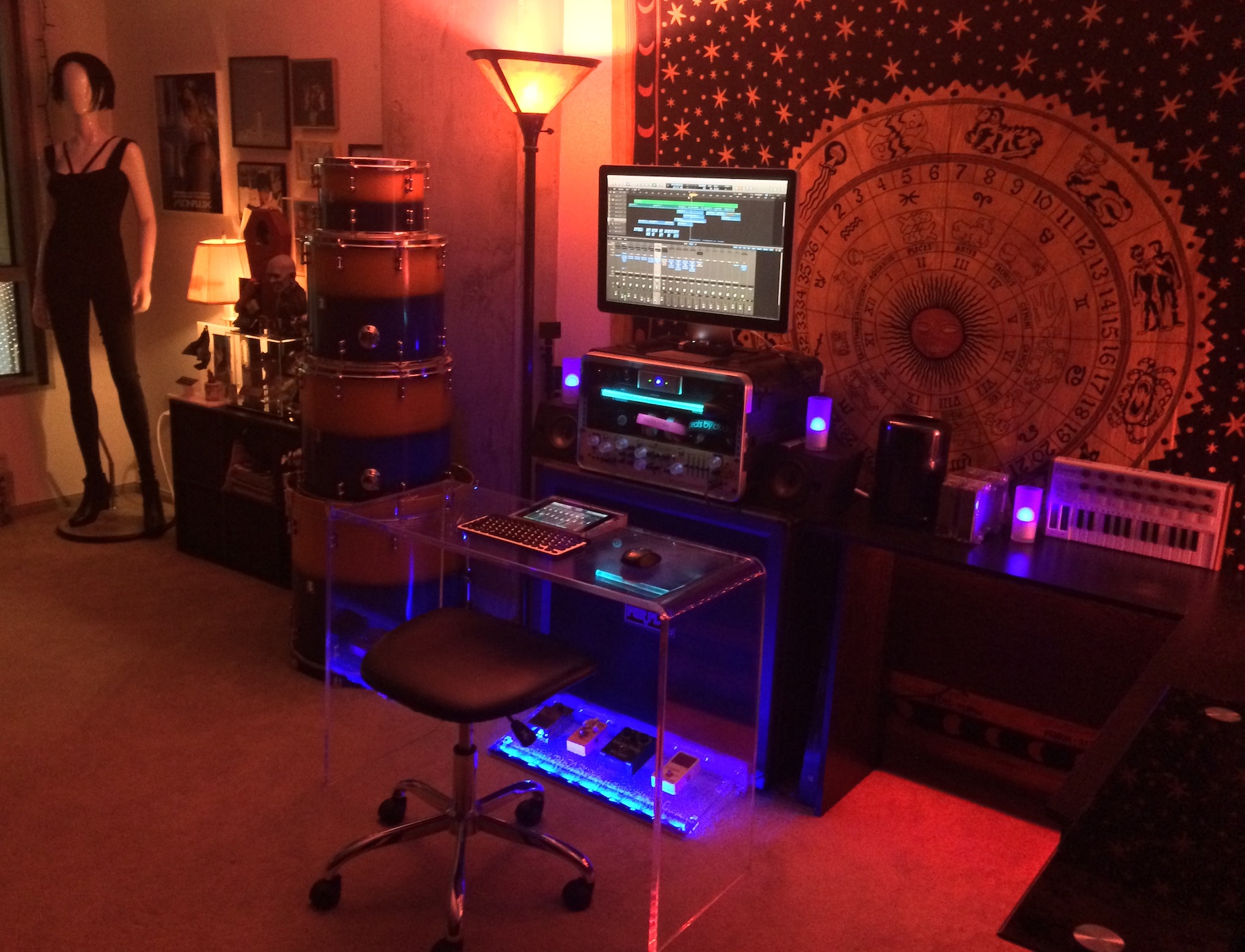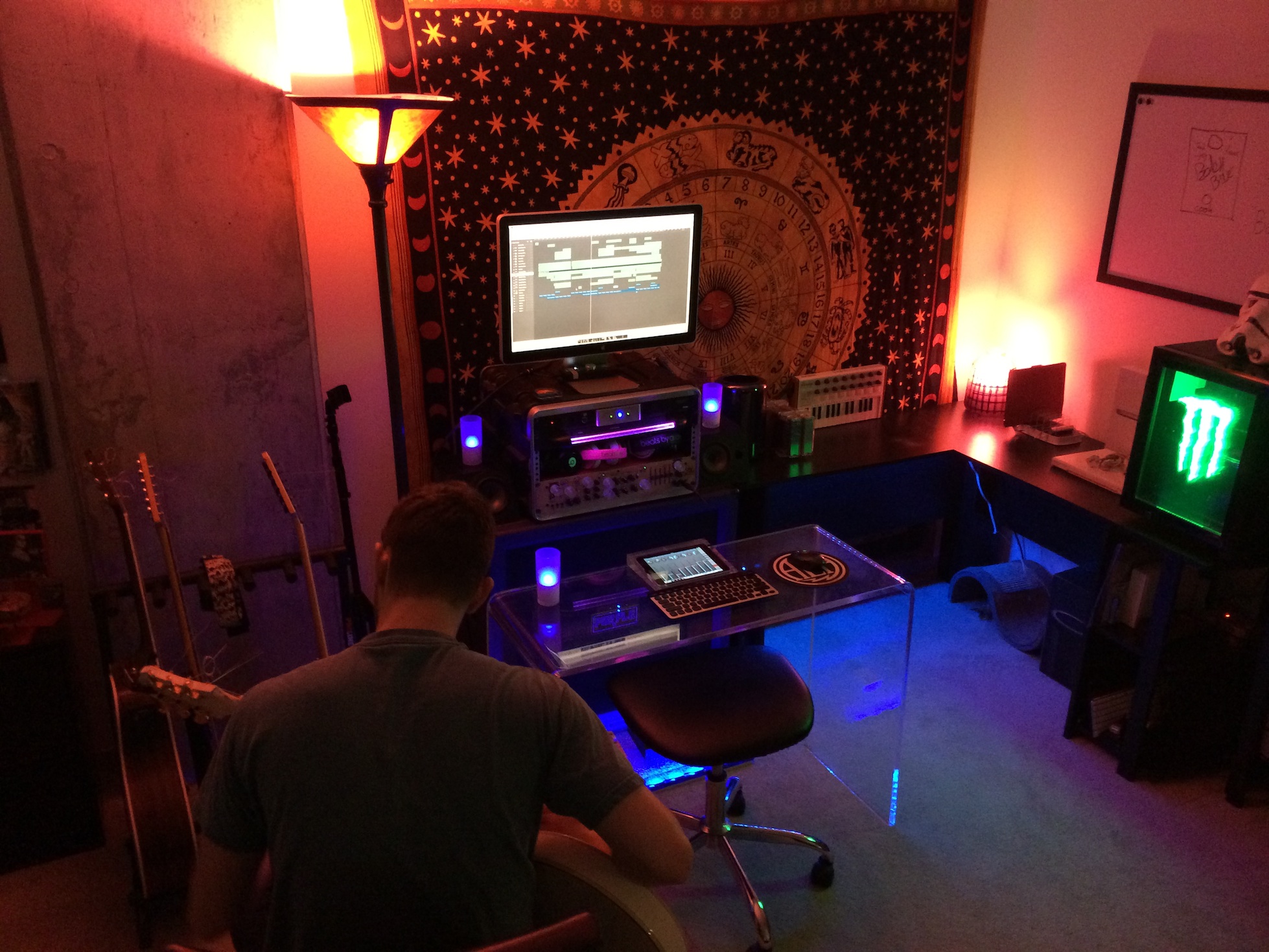- Looking for the best studio monitor speakers for your DAW home recording studio in 2018? The are quite a few choices when it comes to studio monitor speakers. This article will help you choose the best set for your needs. The choices are active or passive speakers. Active powered speakers have amps built-in that boost the volume of your music signal.
- Enjoy premium sound quality or create music with ease. Shop headphones and microphones for Mac from Apple. Buy online with fast, free shipping.
- Sound Studio 3 is an easy-to-use Mac OS X application for recording and editing digital audio on your computer. Digitize tapes and vinyl records, record live performances, create your own mixes with crossfades, tweak the levels and EQ, apply digital effects and save in all major file formats with Sound Studio 3!
- Get the guaranteed best price on Recording Packages like the Tascam TrackPack 2x2 Complete Recording Studio for Mac/Windows at Musician's Friend. Get a low price and free shipping on thousands of.
When you start getting serious about making music, there will come a time when your headphones or computer speakers just aren’t cutting it anymore. To make your music sound its best, you need to hear as much detail as possible—and that means getting a pair of real studio monitors.
Edifier R1280DB Powered Bluetooth Bookshelf Speakers - Optical Input - Wireless Studio Monitors - 4 Inch Near Field Speaker - 42w RMS - Wood Grain (Wood). Simply connection to an iPhone, Android, Tablet, PC or Mac. STUDIO SOUND QUALITY - Naturally fine tuned sound reproduction from 4 inch bass and 13mm silk dome tweeter. OPTICAL AND COAXIAL. Edifier R1280DB Powered Bluetooth Bookshelf Speakers - Optical Input - Wireless Studio Monitors - 4 Inch Near Field Speaker - 42w RMS - Wood Grain (Wood). Simply connection to an iPhone, Android, Tablet, PC or Mac. STUDIO SOUND QUALITY - Naturally fine tuned sound reproduction from 4 inch bass and 13mm silk dome tweeter. OPTICAL AND COAXIAL.
Fortunately, there are tons of great models available, all suited to different uses, tastes, and price ranges. This guide will help you choose the best monitors for music production by answering some common questions and suggesting popular models for home, project, and professional studios.
But before we get into how to choose a pair of studio monitors, there are a couple of important issues to address. First of all, the sound of your room matters just as much as your speakers—even the best monitors in the world will sound like crap in a room with poor acoustics. So before you buy, read our guide on using acoustic treatment to optimize the sound of your room.
Secondly, familiarity is just as important as accuracy. As long as you know the sound of your speakers intimately, you can achieve great results without breaking the bank for monitors with a completely flat frequency response.

Wireless Speakers For Mac

You can use Audio MIDI Setup to configure audio input and output devices that you use with your iMac, such as microphones and multichannel audio interfaces. Audio MIDI Setup works with many types of audio and MIDI interface devices, including your computer’s built-in audio and digital multichannel audio devices. It works with devices connected to your iMac using FireWire, USB, Bluetooth, PCMCIA, and PCI.
Best Studio Monitors For Mac

The settings you can change in Audio MIDI Setup depend on the audio device you’re using. For example, if the device supports volume control, you can adjust the volume for each channel your audio output device has available by following these steps:
- Connect your audio devices to your iMac. If necessary, install any software included with the devices. See the documentation that came with your audio devices.
- Open Audio MIDI Setup (you can find it in Utilities, inside your computer's Applications folder).
- Choose an audio device from the list on the left side of the Audio Devices window.
- To use the device for sound input, choose 'Use this device for sound input' from the Action pop-up menu.
- To use the device for sound output, choose 'Use this device for sound output' from the Action pop-up menu. If you also want to use the device to play system sounds, choose 'Play alerts and sound effects through this device' from the Action pop-up menu.
- On the right side of the Audio Devices window, choose the options available for the device you're setting up:
- In most cases, leave the 'Clock source' pop-up menu on the default setting.
- To set up surround (multichannel) speaker configurations, click Configure Speakers. Then, choose the type of configuration you want to use. See Set up external speakers for stereo or surround sound for more information.
- You can set the sample rate and bit depth in the Format pop-up menus. Make sure they match the appropriate settings for your audio device and that the input and output sample rates are set to the same value. For example, the built-in speakers of an iMac computer may appear like this:
Additional settings
- If your iMac supports the hardware sample rate converter, the Hardware Rate Converter pop-up menu is available in the Input menu. When you choose Automatic from the pop-up menu, the hardware sample rate converter is turned on if the audio samples coming in are PCM and formatted according to the international standard IEC 60958-3. The hardware sample rate converter is turned off if the input stream is encoded. You can also choose Enable or Disable from the menu to keep the hardware sample rate converter turned on or off.
If you choose Enable from the menu, you may not be able to stream non-LPCM or encoded audio because the audio may not be recognized. - If software volume control is available for your device, the Volume sliders are blue to indicate they are active. Drag the sliders to set the volume for each channel.